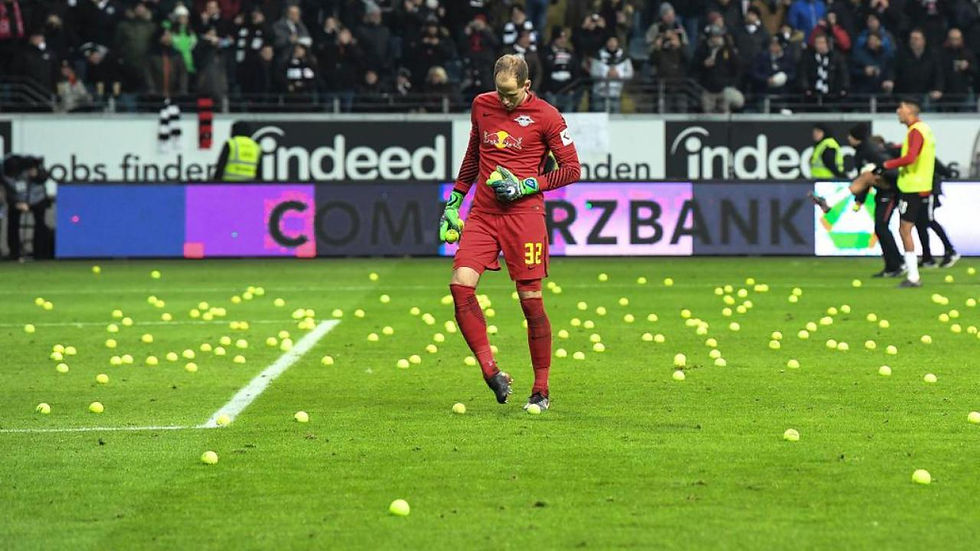What Makes the Millerntor so Special
- Cody

- Feb 28, 2018
- 4 min read
Updated: Apr 25, 2018

There are certain clubs and certain grounds that are rightfully praised for what makes them special. The San Siro, Old Trafford, the Santiago Bernabeu, the Azteca. All grounds steeped in history and all associated with the Milans and Real Madrids of the world. In the increasingly globalized world football, tourists travel thousands of kilometers to experience a match in these hallowed stadiums. And then you have other grounds, and other clubs, who are widely appreciated for reasons other than modernity, size, or success. St. Pauli. The Millerntor. A club and a ground that deserve some attention. St. Pauli, the second division German side who have never done particularly well, but have a worldwide following because of the fans’, and often the club's, political stances and social activism. The club and supporters define themselves by their anti-sexist, anti-racist, and anti-fascist ideals. In the 80's, groups of anarchist squatters began filling up the Millerntor, turning what was a relatively normal club into the Kult club that we know today. Respected and loved by many, St. Pauli is the most supported “second club” in Germany. Others deride the club for becoming a parody of themselves, commercializing an anti-establishment, anti-commercial image. Whatever your views on the politics of St. Pauli, match day at the Millerntor stands as one of the most authentic, fun ways to watch a football match.
Behind this is the St. Pauli supporters long struggle for a more pure match-day experience. They’ve successfully lobbied to have all audio advertisements cut off fifteen minutes before the match begins, helping the fans to build up the atmosphere. In 2011, they pressured the club to remove a luxury box that had female pole dancers working during the match, a luxury box sponsored by a local strip club, on grounds of sexism. The club also allowed the stadium to be used to house protesters at last year´s G20 summit in Hamburg.

The Millerntor has gone through plenty of changes in the recent years but still retains the look and feel of a classic stadium. The ground holds just under 32,000, with roughly 17,000 standing places and 12,600 seats - three sides are terraced, with one used for seating. Each of the stands have been torn down and rebuilt -- the South Stand in 2008, the Main Stand in 2010, the Gegengerade in 2013, and the North Stand in 2014. There was a real possibility in the 80’s that the club would leave its famous old ground for the newly proposed Sport Dome, complete with surrounding shopping center. But this is St. Pauli and that won’t do. The clubs fans staged numerous protests against the change and the Millerntor remained the club's home.
The neighborhood of St. Pauli sits edged between the Elbe River and the more polished neighborhoods of Neustadt and Sternschanze. St. Pauli houses Hamburg's red light district and plenty of bars, in the past filling the neighborhood with ship and dock workers. A working-class, grungy image has long since existed in the neighborhood and in the football club, making the Totenkopf, the skull and crossbones image which has become synonymous with the club, all the more fitting. Stickers and graffiti supporting the club or the club's ultras blanket the neighborhood and many parts of Hamburg as a whole. For being the smaller, second-division club of Hamburg, next to the historic Hamburger SV, St. Pauli certainly feels like the club of the city.
The small streets of St. Pauli help to keep the match day ambiance packed in, with a palpable rise in the neighborhood's energy leading you towards the Millerntor. The bars fill up nice and early, all of the St. Paulianers adorned in brown, black, and white. The stadium sits in the middle of the neighborhood, setting it apart from so many modern stadiums found outside of city centers (HSV's Volksparkstadion is an obvious example.) Across the street from the stadium is the Jolly Roger, the go-to bar and meet up spot for many St. Pauli supporters. Like much of St. Pauli, the Jolly Roger is covered in stickers and gives off the typical punk rock vibe. Good luck grabbing a drink if there's a match that day, as the bar and the space outside fills with fans.

Even some of the aspects which are perhaps not for everyone, such as ACDC’s Hells Bells blaring as the players walk out of the tunnel, are quintessentially St. Pauli and are endearing in many ways. Of course smoking and drinking are permitted, and encouraged, inside the ground. The beers are tall, and you're just as likely to stand next to a guy with a lit cigarette as you are one with a joint. The standing, the beer, the constant singing - it's pure football. The sunshine hits your face, and you know that it's exactly where you want to be. A place in the terrace only costs about 12 euros, an absolutely great value compared to the ever increasing prices around Europe. Coupled with the fact that St. Pauli fans are notoriously friendly bunch, and you've got all the ingredients needed for a great day of football. The Millerntor, as a stadium, and the matchday experience itself feels like a relic of the past, something that was once so common and is now increasingly hard to find. This old ground hasn't and probably will never host a Champions League night, but, like FC St. Pauli, what it lacks in sporting success, it more than makes up for with its charm and character.




Comments